How many horsepower?
Thats a question thats asked way too often and never seems to get an answer that can be trusted!
However, that changed quite radically when KS Motorsports in Mumbai got their own dyno installed and offered it as a service to
anyone who wished to use it. A great move on his part.
What is a dyno?
In short - a chassis dyno like this one is a machine onto which you strap your car down with the drive wheels over a large metal roller, and then accelerate till redline.
The machine then gives you an accurate graph of the horsepower and torque being put down at the wheels.
Finally, a way to get a trustable answer to the "
how many hp?" question!
Here's what the setup looks like
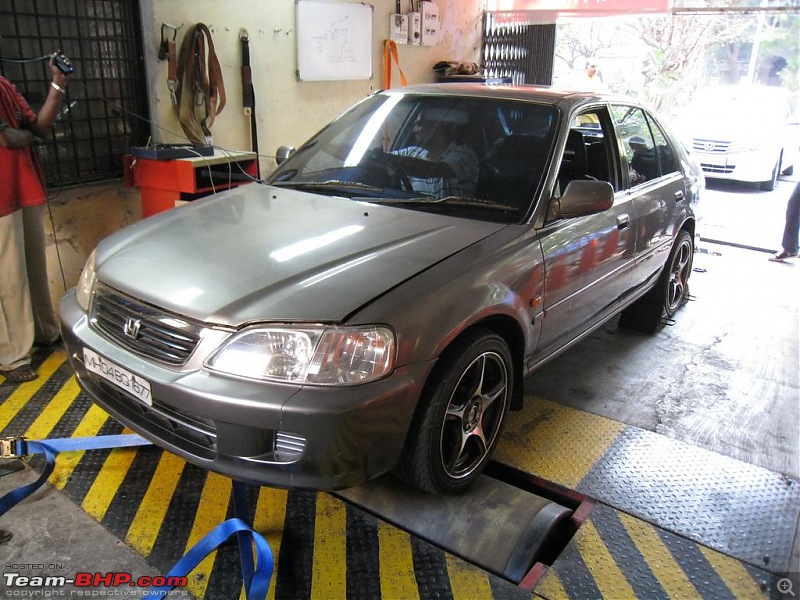
When GTO had his Vtec, he had kitted it out with an air-filter, headers and exhaust system - but never got the chance to take it to the dyno. Recently he sold the car to Avinash_m, but he was still keen to see the real world results of those mods made years back. Better late than never i guess!
Dippy and Avinash were to make the trip to the dyno and I was more than happy to tag along for the run.
The car is driven into the dyno space
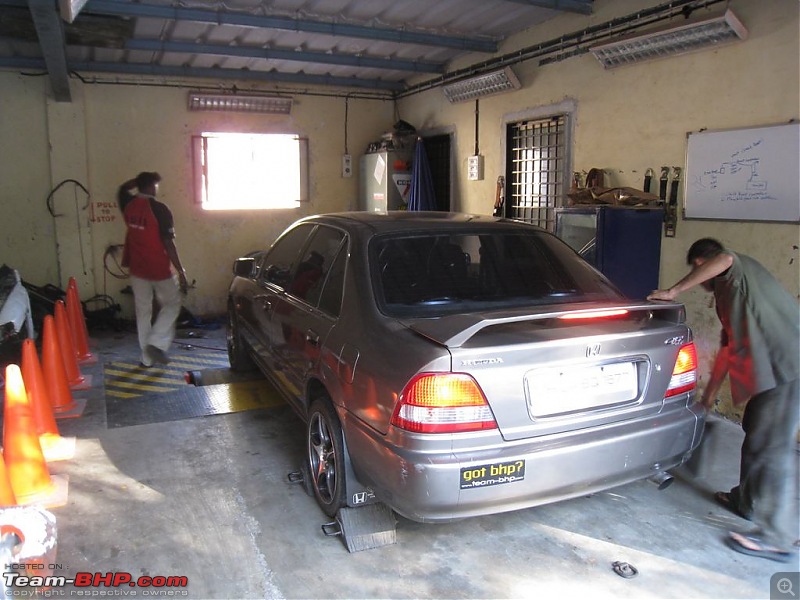
The drive wheels (front in this case) are positioned perfectly on top of the "roller".

The rear wheels are chocked up as a preliminary measure
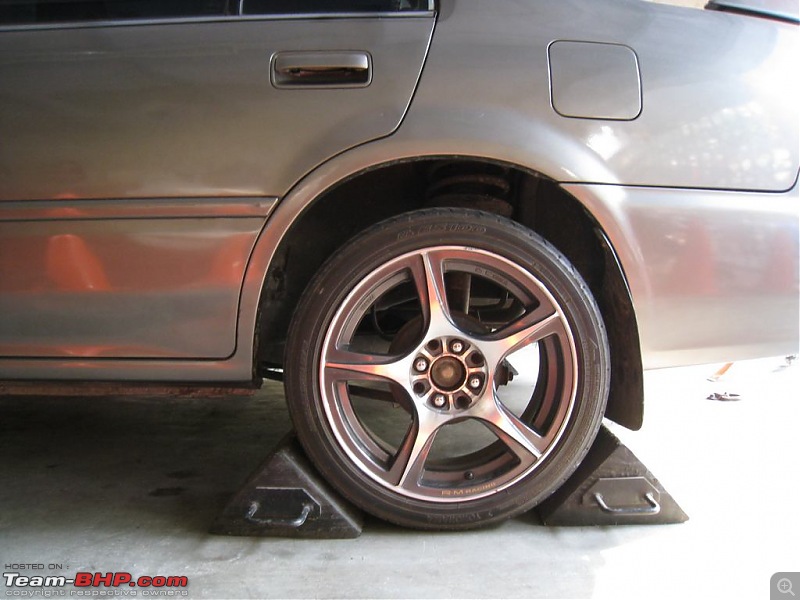
And then the heavy duty strap-down is done at the rear. Without these straps the car could move around on the dyno or even lift off / drive off - which would be a catastrophe
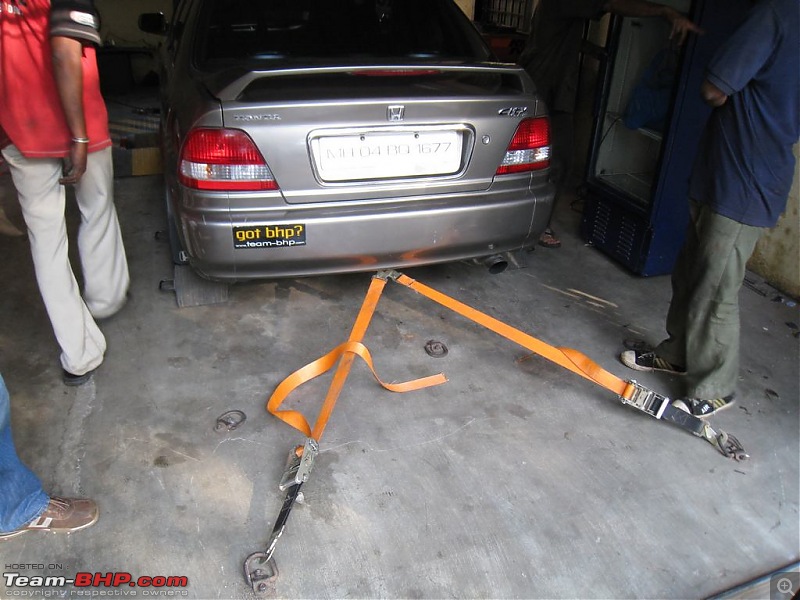
The front is strapped down as well. The "X" crossing layout of the straps not only ensure that the car doesn't move forward or back, but even side to side on the roller - which would be dangerous and also affect readings
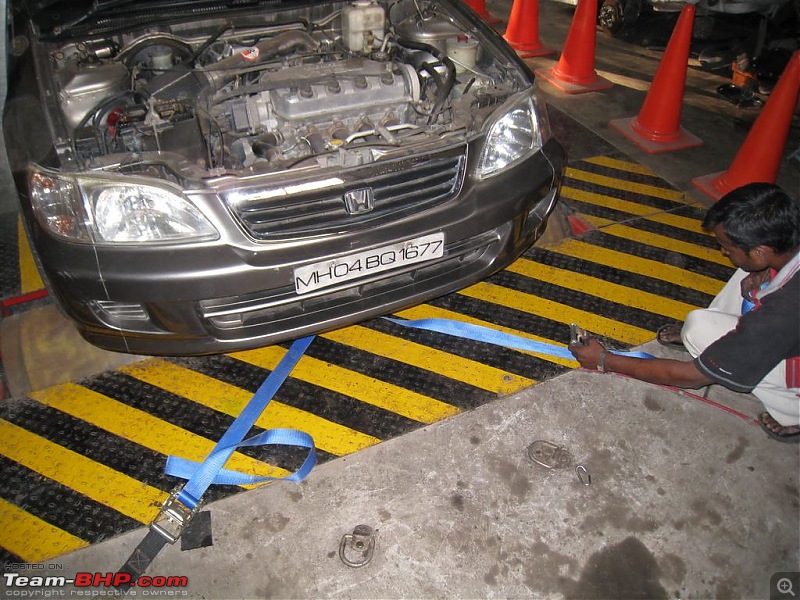
Mods: Synthetic Mobil 1 engine oil, K&N Extreme, 4-2-1 Greddy headers and an Automech exhaust.
(I guess the battery could be relocated to help the K&N breathe better).
Everything else is stock! (
Read more about the modifications)
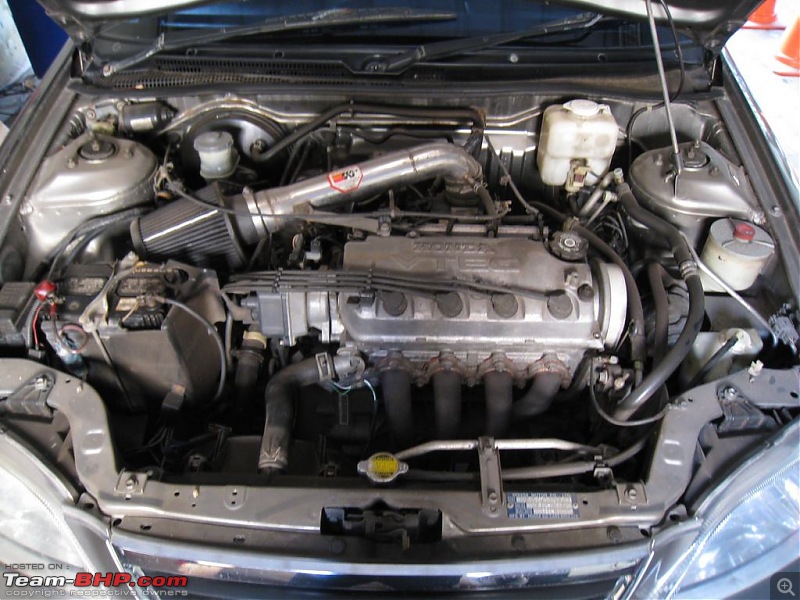
The interface for the controllers laptop
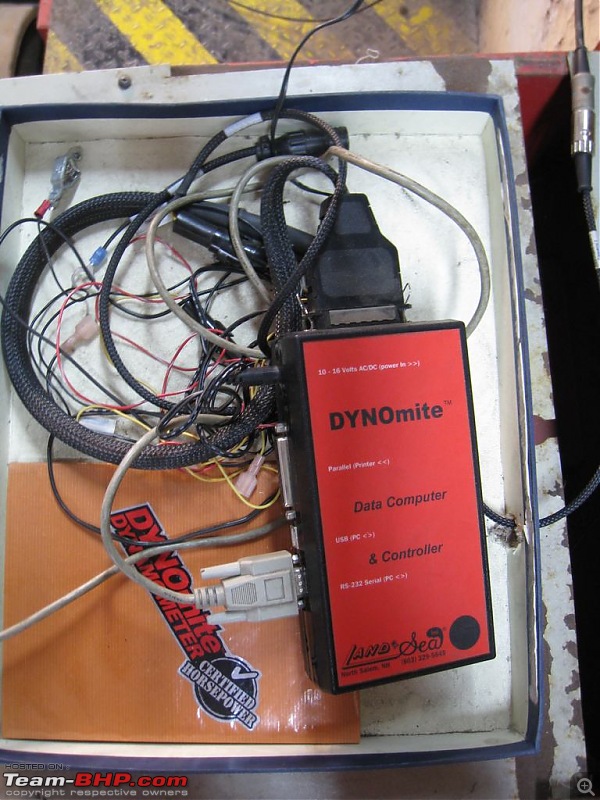
Notice the fan up ahead, which does its small part in trying to keep the air flowing over the radiator. Probably helps a bit when a car is doing multiple consecutive runs.
The red tube going into the ground is a feed of compressed air used to slow down or emergency-stop the dyno roller.
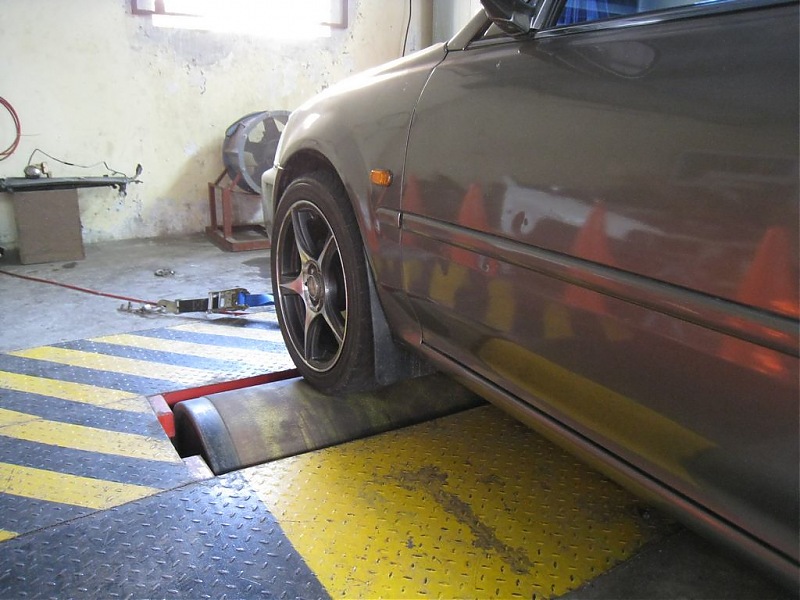
Here's the heavy machinery of the dyno. A 30" dia. metal roller that weighs a LOT. The car needs to accelerate the rotation of this drum as quickly as possible to get the best results. Hence the term
inertia dyno. More on this later.
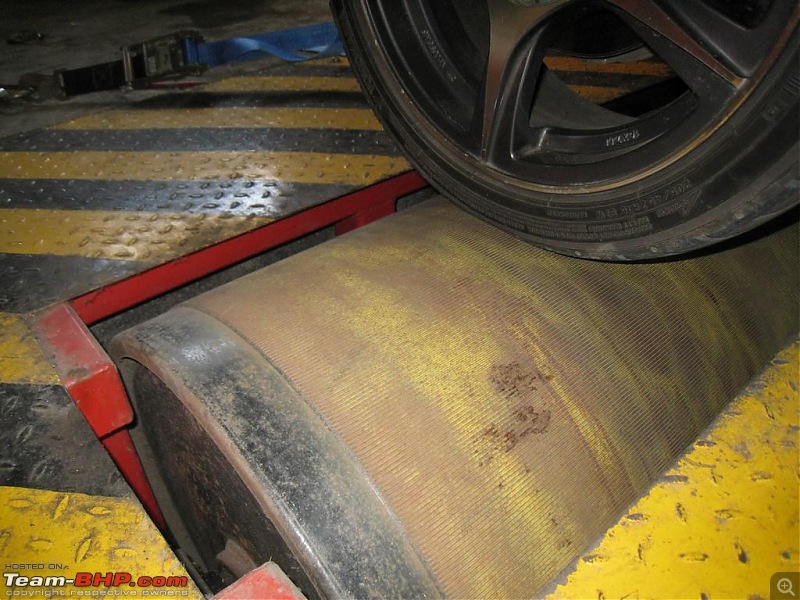
205/45 Yokohamas on 16" wheels.
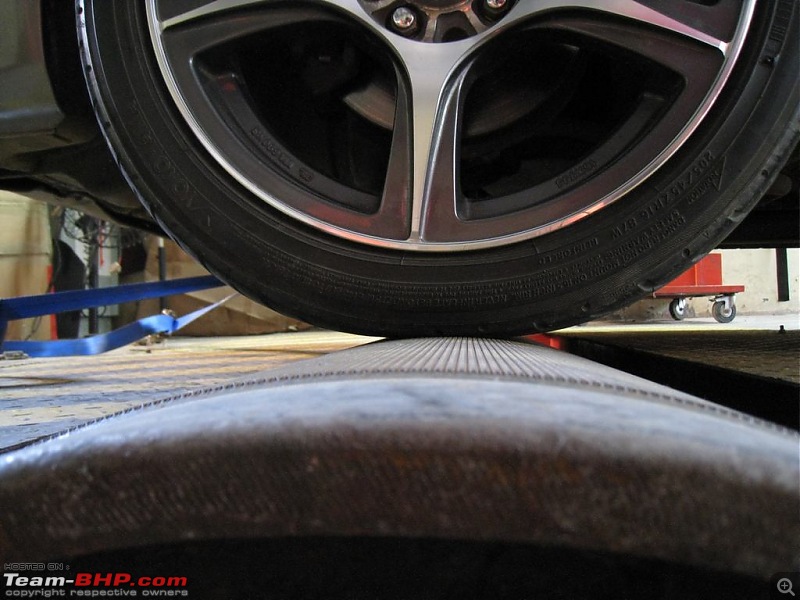
The grooved metal surface of the roller to provide good grip.
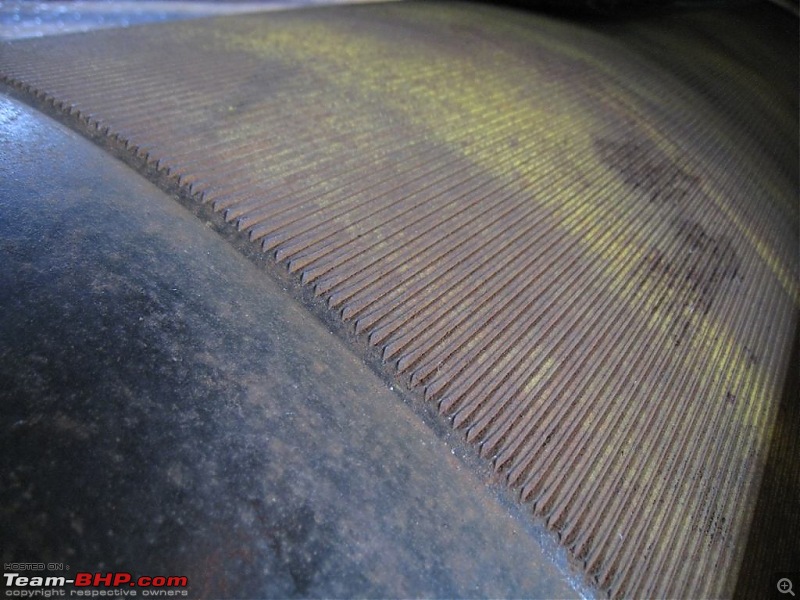
Got BHP? We're about to find out!
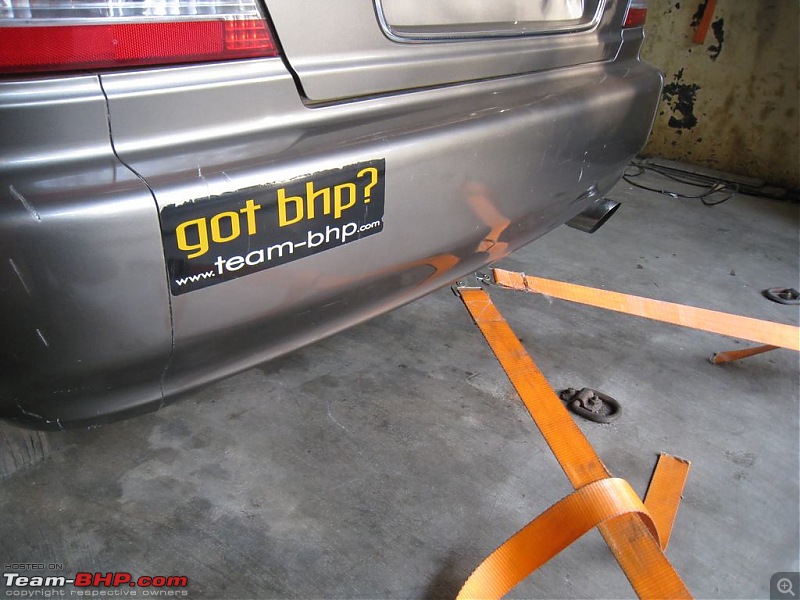
A few basic parameters about the car and weather conditions were entered into the dyno software.
(Karan said that he has played around with different ambient temperature and humidity too see how they affect the final readout - and its not more than a 2-3hp.)
Some dynos connect to the spark plug wires in the engine-bay in order to measure RPM, but in this case, the car is taken to 3,000rpm in the chosen gear and a button is hit to co-relate the engine RPM to the roller RPM.
After a few "warm up" runs (where the laptop battery ran out), the actual run was started - in 3rd gear
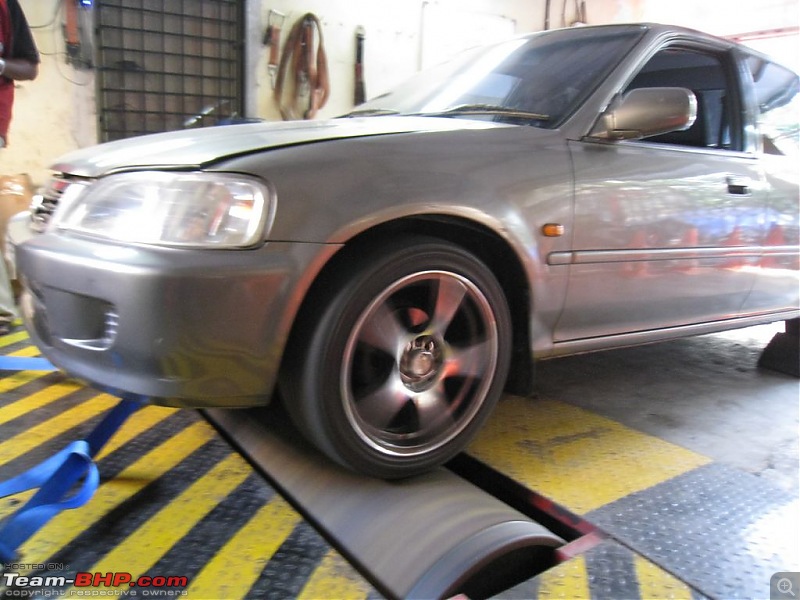
Watch the video! >
The results then show up on the laptop screen in graph format as well as a tabular breakup
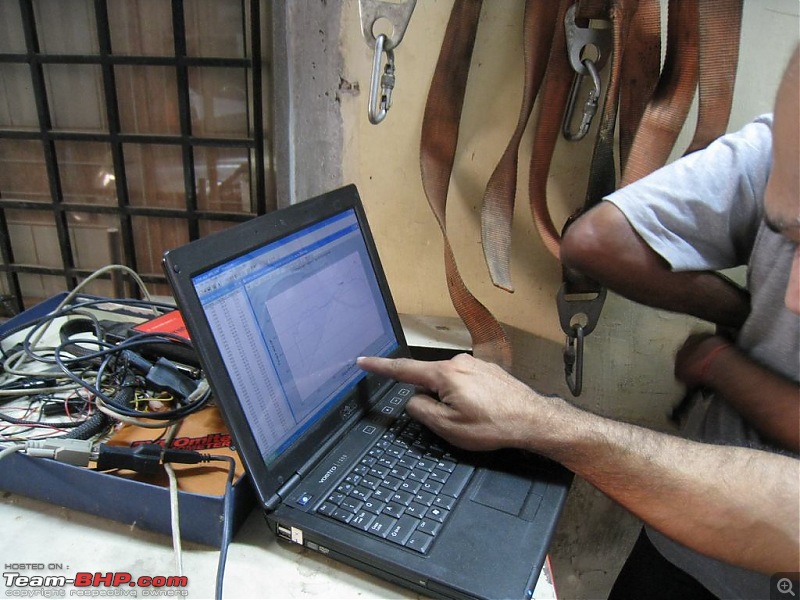 THE RESULT?
THE RESULT?
106 bhp!! Definitely an impressive figure for the relatively minor mods that were carried out. To be honest, i was pleasantly suprised!
Look at the linear climb of horsepower, and the relatively FLAT torque curve all the way up to 6,700rpm, with a peak of 91 lb-ft @ 5,400rpm.
Karan mentioned that a FPR would put up the power by another 2-3bhp and also increase throttle response.

If you notice, the graph isn't drawn past 6.7k even though the engine revs till 7.1k! I checked with KS and he said this was due to tyre slippage (and clutch slippage too). Remember that the "RPM" reading is coming from the rollers and not the engine - so even though the engine might have been at 7.1k, due to the slippage the rollers think it is at 6.7k.
Keeping the above in mind, its best to use RPM as a relative reference between many runs on the same car. For eg, to see how your powerband shifts up or down the RPM range after certain mods.
But wait. 106bhp ?!?! Isn't that what a bone stock OHC Vtec is supposed to put out?
Well yes, but the difference here is that this HP is being measured at the
wheels instead of at the
engine's crankshaft (which is the standard procedure for all manufacturer horsepower claims).
Whats the difference? Well, horsepower at the wheels is always less, due to frictional losses in the drivetrain, inertia of drivetrain parts and a dose of clutch slippage. Typically an average
guesstimate of around 15% is
added to wheel horsepower (whp) to get a decent guess of the hp at the crank.
So, even if we take a reasonable window for drivetrain losses, (say 10% to 20%), this Vtec would be putting out
116 - 127 bhp!
As i said earlier, I'm pleasantly surprised!!


 (10)
Thanks
(10)
Thanks

 (4)
Thanks
(4)
Thanks

 (2)
Thanks
(2)
Thanks























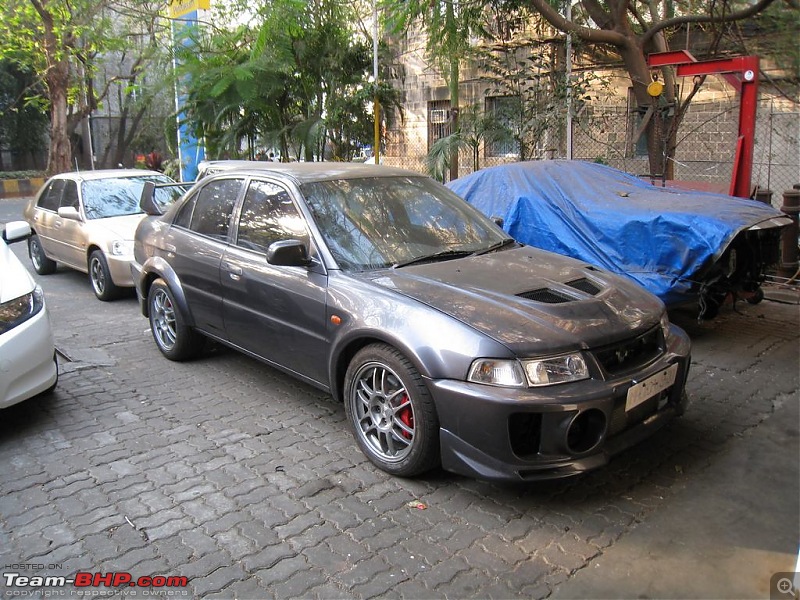
 .
.